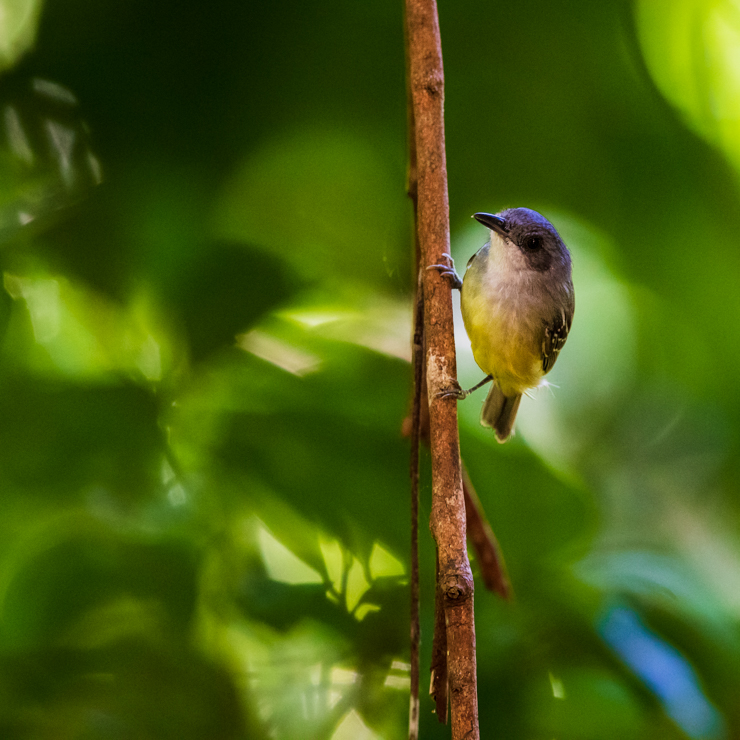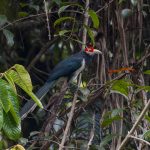
Two Fridays ago, my wife and I packed most of our stuff into a couple vehicles and boarded the inter-island ferry to Tobago. Having been marooned on Trinidad for the last two years, my body was aching for a change. Pre-pandemic, we’d routinely be in Tobago – birding, guiding, and generally having a blast on the smaller island. This time, the shift happens to be of a slightly longer-term nature, I’m typing this from my new home-office at a place I’ve written about before.
With a change in location comes a slew of new backyard birds – some of them are familiar, others less so. There are trails I’ve been taking, the comfort of being able to walk for a few miles through forest without seeing a single other human being is something I never thought I’d appreciate this much. Most significantly, when I go out for a walk, there is no need to wear a mask!
Anyway, I figured I’d introduce you to some of my new backyard friends here. The first birds I photographed on the island turned out to be a pair of Palm Tanagers.

Palm Tanagers

Many of the trees are into their flowering phase currently, this tree with the Olympic torch shaped flower is locally known as bois flot for “wood that floats” – it is a balsa tree. Many birds love the flowers, such as this Red-crowned Woodpecker.
I don’t have any Great Kiskadees stalking the garden as there aren’t any of those on Tobago – but there are Brown-crested Flycatchers, Yellow-bellied Elaenias, and Fuscous Flycatchers along with two species of kingbird – Grey Kingbird and Tropical Kingbird.

Brown-crested Flycatcher (above) and Fuscous Flycatcher (below)

Each morning one of the first calls that reaches my ears is that of the Cocoa Woodcreeper. There are numerous mountain immortelle trees on the property – a relic from its cocoa estate past – and the woodcreepers methodically strip the bark on the oldest branches in search of any grubs. I’ve also been hearing the tiny Olivaceous Woodcreeper but a visual still eludes me.

Cocoa Woodcreeper
All six of Tobago’s hummingbirds can be seen here, and I’ve been catching glimpses of all of them. I say glimpses because they’re all busy with the flowering trees throughout the rainforest currently and not attending the feeders as they do during other times of the year. The six are Ruby-topaz Hummingbird, Copper-rumped Hummingbird, White-necked Jacobin, White-tailed Sabrewing, Rufous-breasted Hermit, and Black-throated Mango.

Black-throated Mango (above) and Rufous-breasted Hermit (below)


For anyone who’s been birding in T&T, you should be able to attest to the fact that Trinidad Motmots are far easier seen on Tobago than on Trinidad.
Along the trails there are many species that accompany the walker. Antwrens are furtive residents of deep forest on Trinidad, but on Tobago one can experience a pair of White-fringed Antwrens seemingly around every bend, whether it is scrub, dry forest, or rainforest.

White-fringed Antwren
Tobago only has a single species of manakin and it is arguably the most extravagant of the three manakin species in T&T. The Blue-backed Manakin is the largest of the trio and has an extremely complex courtship routine.

A pair of Blue-backed Manakins strategizes before hopping down to the dancefloor.

A Plain Antvireo popped up to say hello while we were looking at the manakins.

Nighttime around the property is abuzz with activity with around four or five White-tailed Nightjars jostling for prime spot under the floodlights.
I hope you’ve enjoyed this fleeting introduction to this fascinating island – much more to come in the future!













Leave a Comment